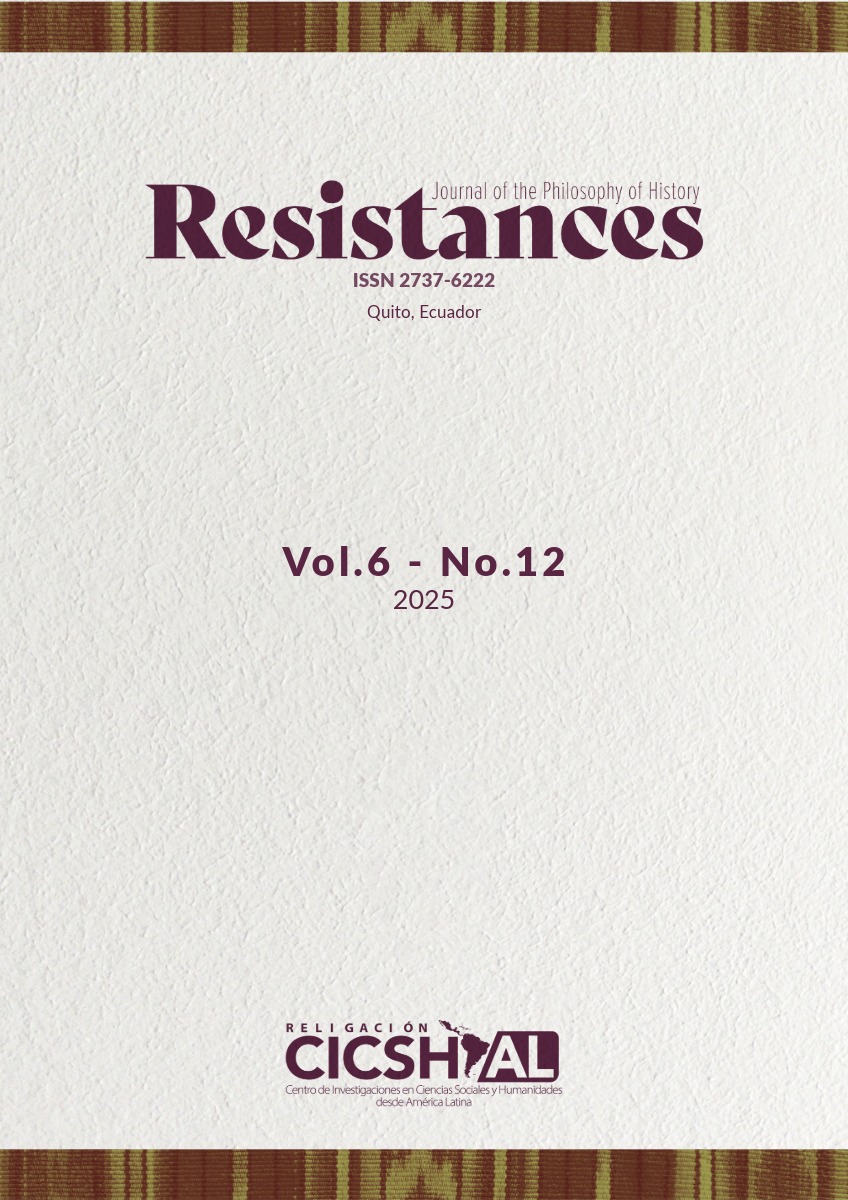Abstract
This article analyzes the representation of the priest in cinema between 1930 and 2025, with the aim of tracing its narrative-symbolic transformations. The research qualitatively analyzes significant films from different contexts, employing tools of film hermeneutics and reception studies. The results reveal three major stages: in classical cinema (1930-1960), the hagiographic and apologetic image predominates; from the 1970s onward, the priest appears marked by secularization and the psychologization of guilt; in the contemporary period (2000-2025), a plurality of approaches stands out, including institutional critique, exploration of existential crises, and silent spirituality. The analysis also highlights how cinema plays a role in the construction of the social imaginary, either supporting the moral authority of the Church or questioning it in the face of contemporary controversies. It concludes that the cinematic priest gave way as a symbol of religious authority to be represented as a mediator of spiritual and social tensions.
References
Cáceres Mateus, S. A. (2011). El cine moral y la censura: Un medio empleado por la Acción Católica Colombiana 1934–1942. Anuario de Historia Regional y de las Fronteras, 16.
Clogher, P. (2024). One long kiss: Paul Shrader’s First Reformed and a cinematic theology. Religions, 15(12). https://doi.org/10.3390/rel15121480
Crome, A. (2020). “Wonderful”, “hot”, “good” priests: Clergy on contemporary British TV and the new visibility of religion thesis. Religions, 11(1). https://doi.org/10.3390/rel11010038
DeBona, G. (2009, 17 de agosto). Screening priests: From Spencer Tracy to Ewan McGregor. America Magazine. https://n9.cl/2at8h
DiCerto, D. (s. f.). Sanctity and sacrilege: Catholic priests in film. Catholic Review (Archdiocese of Baltimore). https://n9.cl/rm9zl
Doherty, T. (1999). Pre-Code Hollywood: Sex, immorality, and insurrection in American cinema 1930–1934. Columbia University Press.
Gil de Muro, S. (1956). El cine en la formación sacerdotal. Revista Seminarios, 26(13), 147–157.
Girard, R. (1977). Violence and the sacred. Johns Hopkins University Press.
González Manrique, M. J. (2003). La moral religiosa y el cine español de la Transición (1973–1982)[Tesis doctoral, Universidad de Granada].
González Manrique, M. J. (2013). La imagen del clero en el cine español de la Transición. LibrosEnRed.
Jones, E. M. (2008). The Jewish revolutionary spirit and its impact on world history. Fidelity Press.
Kozie?, J. (2025). The image of monks and the monastic community in the latest Russian cinematography. Religions, 16(3). https://doi.org/10.3390/rel16030351
Lai, Y. H. B. (2024). Representations of Christianity in Chinese independent cinema: Gan Xiao’er’s postsocialist religious critique. Religions, 15(4). https://doi.org/10.3390/rel15040443
Lechuga Valencia, L. (2023). Representaciones de la Iglesia Católica en el cine chileno reciente [Tesis de Maestría, Universidad de Chile].
Linze, L., & Mat Desa, M. A. (2024). Exploring the intersection of religion and cinema: Trends and reflections in contemporary film culture. Journal of Ecohumanism, 3(4), 225–235. https://doi.org/10.62754/joe.v3i4.3500
Makow, H. (2008). Illuminati: The cult that hijacked the world. CreateSpace Independent Publishing Platform.
Malone, P. (2019). Screen priests: The depiction of Catholic priests in cinema, 1900–2018. ATF Press.
Mayward, J. (2023). Viewing Terrence Malick’s A Hidden Life as political theology: Toward theocinematics. Journal of Religion & Film, 27(2). https://doi.org/10.32873/uno.dc.jrf.27.02.02
Moreno Martín, F., Fernández-Villanueva, I., Ayllón Alonso, E., & Medina Marina, J. Á. (2022). Guilt, psychological well-being and religiosity in contemporary cinema. Religions, 13(4). https://doi.org/10.3390/rel13040277
Sanz, J. A. (1995). El cura en imágenes: Perfil del cura en el cine norteamericano. Seminarios sobre los ministerios en la Iglesia, 41(137).
Sanz Ferreruela, F. (2003). El confesor, de los Hermanos Baños (1920): Un singular tratamiento de lo religioso en el cine mudo español. Artigrama, 18.
Soko?owski, A. (2023). Film dilogy about faith, suffering, and illness. Kultura i Edukacja 142(4), 153-164
Xue, B., Wang, Z., Liu, Y., & Song, Y. (2024). Faith in frames: Unveiling therapeutic narratives in religion-related cinema through computational analysis. Frontiers in Public Health, 12. https://doi.org/10.3389/fpubh.2024.1385379
Zwierzchowski, P. (2021). Clergy (Kler) by Wojciech Smarzowski – The image of Catholic priests in Polish movies after 1989. Studia Religiologica, 54(1), 81–94. https://doi.org/10.4467/20844077SR.21.006.13930

This work is licensed under a Creative Commons Attribution-NonCommercial-NoDerivatives 4.0 International License.
Copyright (c) 2025 Juan Antonio Parra Hurtado






